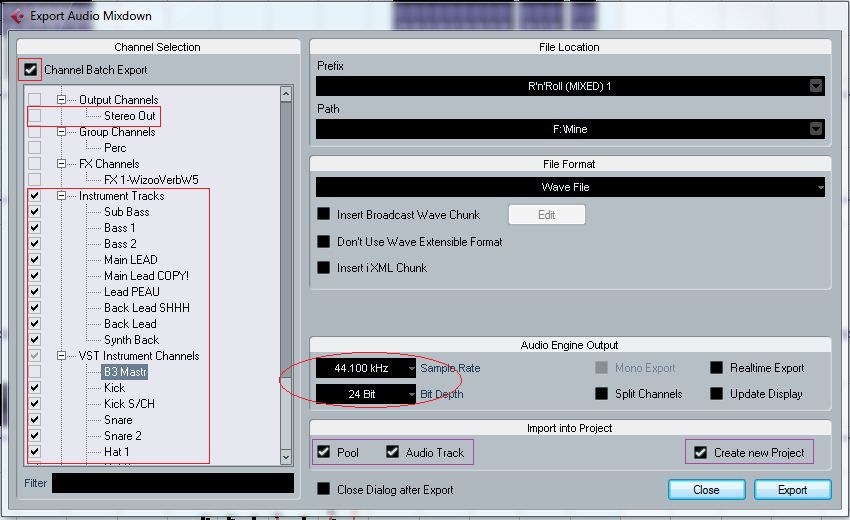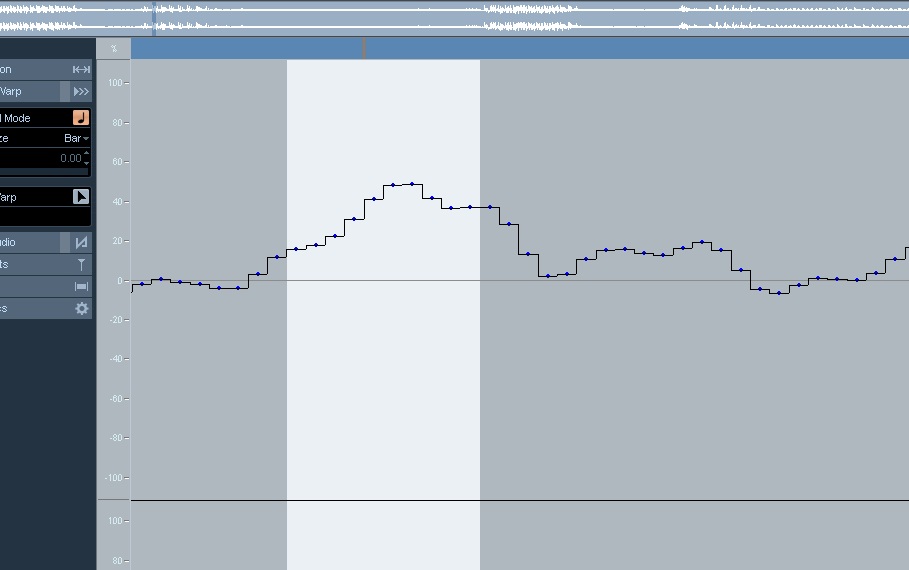Material preparation note and balancing
Last time
We positioned the instruments in the “space” of the mix, applying panning and equalization, which, from the sound engineer’s point of view, is the horizontal position of the instrument (pan), and the vertical position that the equalization sets (the higher the frequency range of the sound, the higher the sensation space). And if we began to discuss the process of information with you, then you just need to go back a bit and cover two more questions:
- preparation of the material note
- determining the distance to the instrument (balance of instruments by volume)
Preparation of the material note
Before you start the process of converting all the tracks of the instruments must be converted to WAV 32 bit or 24 bit (“home version”) with a sampling frequency of 44100 kHz. This primarily concerns those who work with MIDI information, that is, with midi-scores of synthesizers and drum machines. Before conversion, you need to turn off all effects in the mixer channels. Save the mixer settings if you think you need to leave the current processing. Unfortunately, I can not explain how this is done in each of the existing hosts, so the “google to help”, as they say.
We prepared mixer channels for conversion, now we need to convert each track into a separate WAV file. I will explain how to do this using FL Studio and Cubase as an example.
')
FL Studio
In the conversion (rendering) dialog box, turn on the light bulb to the left of the “split mixer tracks” (which means “split mixer channels”), and specify the folder where your instruments scores will be converted. The process is very simple and is no different from the master bus rendering process.
Cubase
In the “Audio Mixdown” window, we enable the checkbox to the left of “Channel Batch Export”, in the narrow field below it we mark all the tools and make sure that the “Stereo Out” box is unchecked - this is the master bus, we do not need it. You should also uncheck send effects (FX Channel Track).

The “Pool” and “Audio Track” checkboxes allow you to put all tracks into the pool and create corresponding Audio tracks in the project for “instant start”, and “Create New Project” will determine whether a new project will be created for this or the current one will be used (unchecked) . If the power of your computer allows you to comfortably mix (in the process which will still require computer resources for processing), you can use the current project, greatly facilitating the task. Create a track folder (Folder Track) and place in it all the tracks (except FX), and then mute it. Now everything is at hand: send effects with saved settings and all “insert” effects that can be transferred from bus to bus at any time.
Why is this all?
First of all, the audio is stable: there will be no unexpected clicks (as can be when working with MIDI and synthesizers). And all the existing (after conversion) amplitude “jumps” can be eliminated by “sample” editing the audio track. In Cubase, this is done simply: open the Audio editing window, listen to the instrument’s solo (vocals), look for distortions (amplitude jumps, they are clicks or pops), do Zoom In until the samples appear (the points through which the curve amplitude) and adjust the pencil as in the program "Paint".

Balancing and initial levels
Balancing - adjust the volume of instruments in the mix. This is where the mixing begins.
Before starting this crucial process, it is necessary to determine the initial level of all the instruments (the position of the faders of all active mixer channels with which the balancing begins). Someone suggests using separate "initial levels" for each type of instrument (for example: "-3" - barrel, "-5" - bass), but I do not see the point. I use values from -7 to -10 dB for all instruments. In Cubase, the easiest way to do this is to select all the active channels in the mixer, right-click and select “Link Channels”.

Now the channels are “linked”, and all volume faders will move simultaneously. Do not forget to do all the same then, just click "Unlink Channels" to remove the "link".
Balancing is based on the fact that the volume of the instrument sets the initial distance to it, although, of course, a significant contribution to determining the distance is made by the effects of reverb and delay (Delay), but at the initial stage all instruments should be in balance by volume. Watch the output level on the master bus: do not allow the signal to be clipped (exceeding the threshold of 0 dB), but rather keep the distance to the threshold (-2, -3 dB). Do not use limiters in the process of mixing!
Keep in mind that during the mixing process you will return to the volume fader more than once. This balancing is preliminary and will require adjustments after equalization, compression and application of effects (both rupture and send).
Important: in some points of this article the subjective point of view is reflected; Everything described here is not an axiom and has a cognitive character.
Source: https://habr.com/ru/post/141908/
All Articles